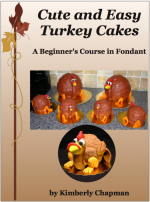As mentioned in the Four Pounds of Cheese Project post, I decided to go beyond the edible waste photography and take a record of other food-related waste that week. This post is the inedible food. Next will be food packaging.
So here is a quick post of the photos I took from August 1-7 of the inedible waste from our kitchen. A lot of it is eggshells, which probably can go in the compost but we generate so many of them with all my baking that we’re not sure if it’s too much, so mostly they get thrown out. Also, my husband has to be around to take the compost out because the bin is swarming with the bug of which I am COMPLETELY PHOBIC (and that’s the end of that, no discussion please, I will block any comments about it because when I say phobic I mean PHOBIC and not mere dislike, got it?). Anyway, that frequently means a lot of these fruit scraps and coffee grounds end up in the trash instead of the compost. Sad but true.
I didn’t include the baked sprinkle waste from the cookies because I’ll show those with the parchment paper they’re on in the next post. I did include the little bit of shake’n’bake that had touched the raw meat. I actually dump the excess over the meat on the tray but my husband doesn’t. It’s really waste either way, I guess, since little of the excess sticks anyway.








That’s probably a good average. If I bake a lot in a week, there’ll be more eggs and possibly a bunch of juiced and zested lemons. During certain fruit seasons, the rinds and peels pile up, especially with melons. A week with a lot of from-scratch cooking would have more onion and garlic peels.
Of course, any week with more scratch cooking means less product package waste, and at least the peels and rinds are compostable!












I posted my inedibles at the same time I posted the edibles, and they look very similar to yours. I don't have that Phobia, so everything goes in the bin. 😉 Have you thought about using worms? Apparently that doesn't smell, is very efficient and gives you good, um "dirt" for your garden. 🙂
We looked into the worm option but the maintenance required to keep them from baking, drying out, or drowning in our variable Austin weather was more than we could take on with our schedules. We also aren't composting to get compost since we don't really do any gardening that demands compost; we do it only for food waste.
Look into the Green Cone–it's a digester, not a composter. Might be useful for you guys: http://www.peoplepoweredmachines.com/greencone/ A friend has one and loves it. They move it every year or two to enrich the soil, too.
I found worms to be really easy in a hot, dry climate with summer rain, and I found that with the worm bin we used there were very few drownings, even when there was a lot of rain (and maybe those were the slow worms anyway…?….) . I am a strictly no-maintenance kind of woman, too, so when I say really easy, I mean it :). Grinding egg-shells to give to worms was my daughter's favourite kitchen activity for a long, long time.
citrus rinds can become candied I hear….not that I have managed it…and one can pickle watermelon rind…
Yup, I saw a recipe on Martha Stewart's twitter feed a few weeks ago to make candied some-kind-of-fancy-lemon-they-don't-have-at-HEB peel. Mayer? Myer? Something like that. Corran said Central Market has 'em.
But basically you boil the peels in a sugar solution, let them dry, then roll them in sugar.
You can do worm composting inside, many classrooms do that.
For the eggshells, ask on Freecycle if there's anyone with chickens, or a large garden, that would want them 🙂
We feed all vegetable scraps to chickens, or dairy goats. We have the luxury of farm living, though. One caveat for eggshells to chickens is the school of thought that feeding shells, ostensibly to give them calcium, can begin them picking at whole eggs. This is obviously not desirable! We operate a organic CSA, and have instituted this year feeding all stalks, cull leaves, husks, grasshopper-chewed fruits, etc. to our livestock. Works wonderfully. We typically compost, or plow under some garden waste, but it's been win-win to feed out some, too!